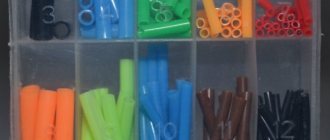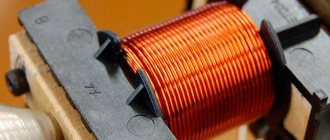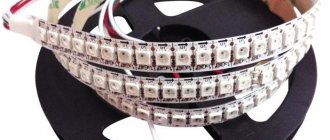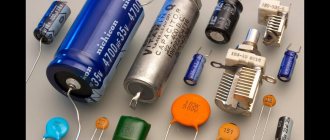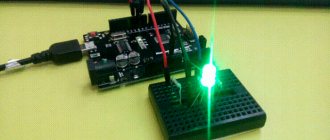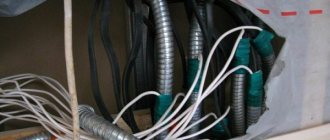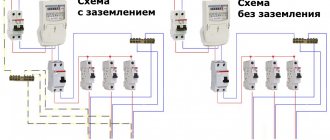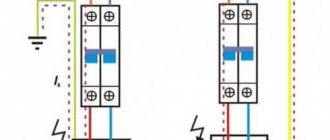SMP LLC supplies SMD electronic components from the warehouse for the development and production of electronics using surface mount technology. We supply chip components from the world's leading manufacturers: MURATA, KEMET, AVX, VISHAY, TAIYO YUDEN. All components comply with the ISO9001 quality standard and are purchased through official distributors of manufacturing companies. We hope that a flexible system of discounts and an extensive warehouse will make it profitable for you to complete both pilot and mass production.
SMP LLC offers services:
SMD resistors and potentiometers
Fixed chip resistors:- 0402 1%;
- 0402 5%;
- 0603 1%;
- 0603 5%;
- 0805 1%;
- 0805 5%;
- 1206 1%;
- 1206 5%;
- 2512
SMD capacitors
Ceramic chip capacitors;- 0201;
- 0402;
- 0603;
- 0805;
- 1206; 1210;
- over 2.2 µF;
- high voltage;
- X and Y capacitors for 220V;
- Tantalum chip capacitors;
- Aluminum chip capacitors;
- Low ESR capacitors
- OCV;
- D case
SMD inductors and chokes
Inductors Murata;- LQG18H;
- LQM21;
- LQW2;
- LQH43
- SQ3225; SQ4532;
- SDR 0604; SDR 0805; SDR 1006
- low profile SH 3018; SH 4028; SH 6028;
- SS 0704;
- SU 8030; SU 8040; SU 1050;
- high current HP 0602; HE 0630; SP 6045; HE 1040
- TB1005;
- TB1608, TI1608;
- TB2012, TI2012;
- TI3216
- TF1005 (0402) and TF1608 (0603);
- TL1608 (0603);
- TL2012 (0805)
- on ferrite ring SF 0905;
- DLW21 for USB filter;
- dual chip inductor GSPWC1206;
- linear filters for current up to 2.5A
- suppressor PGB1010603
Acoustic components
Piezo emitter and piezo generator; Electromagnetic emitters;- Active microphone
Microswitches and switches, buttons
Switches:- Slide microswitches;
- slider DIPs;
- rotation RJM3;
- sealed toggle switches for 2 and 3 positions;
- ALPS encoder
- Mini button with backlight;
- Tact buttons;
- Changeover button 3 contacts
[/td]
[td]SMD LED manufacturing technology
Initially, metal-organic epitaxy gained the greatest popularity in LED production. Its distinctive features include complete automation of the production process under clean gas conditions. Crystal growth occurs under maximum control of all available factors in order to obtain a uniform structure on the substrate surface. After finishing, the film is cut into specified sizes, installed in the housing and connected to the contact terminals. In addition to the basic procedures for assembling a finished radio element, there are several disadvantages that limit the capabilities of this technology. The main disadvantage is poor heat removal from the crystal at increasing currents.
Due to the impossibility of overcoming this drawback using simple methods, the era of SMD technology has begun in the production of emitting radio components. The COB (chip on board) method comes out on top. The LED film, made using COB technology, is glued to a metal substrate, which acts as a radiator. Next, an LED module is created in accordance with the specified geometric dimensions. Currently, the size of one module can reach 75 mm. And this is not the limit.
Connecting SMD LEDs
If you decide to install SMD LEDs yourself, then you need to know and follow the laws of electrical engineering and the following rules:
- You cannot use an SMD diode as the only load element for the power supply. Correct activation involves installing a current limiter in the form of a resistor or a specific driver.
- Several LEDs must be connected in series through one resistor. The resistance of the limiting resistor should be calculated according to the rated current of the SMD element and have high thermal stability.
- Parallel connection of several LEDs through one resistor is unacceptable due to the variation in the parameters of each element. Even a small current overload (several mA) will lead to overheating and a sharp decrease in service life.
- Avoid connecting emitting diodes of different sizes in series, as they have different operating currents. The practical implementation of this option will lead to a voltage imbalance and, as a result, will affect the brightness of the glow. Excessive differences in parameters can cause failure of the SMD component.
- The operating current VD should not be overestimated when calculating a resistor, even on a small scale. A short-term increase in brightness will cause overheating of the substrate with a gradual effect of decreasing light output.
It will be interesting➡ What are field-effect transistors?
Switching power supplies for SMD LEDs
The variety of forms and technological differences provoked the release of an equally wide range of converters. Their main purpose is to maintain the output signal at a given level in accordance with the passport data. In terms of design, the compact unified power supplies listed below are in greatest demand among consumers. Their action is based on the pulse method of signal conversion. The main differences from each other are functionality and degree of protection from dust and moisture. They found their main application as a source of stabilized current for LED strips, which clearly demonstrate the advantages of SMD technology.
Using the tape as a load does not require the introduction of additional links into the electrical circuit in the form of drivers and compensating resistors. To connect low-current LED elements and short-length 3528 form factor strips, a small-sized switching power supply (UPS) in a plastic case will be sufficient. For home use, but with a larger load capacity, open-type UPSs with exposed terminals are perfect. In outdoor conditions and in high humidity, a UPS with a degree of protection of at least IP67 in an aluminum case should be used. Most models have an output voltage of +12V, rarely +24V. It is imperative to provide a power reserve within 10-15% of the nominal value. This is often due to the lack of overload capacity of Chinese-made electronics. By the way, it is also not recommended to leave the UPS without load, due to the electromagnetic characteristics of the transformer.
LED strip with SMD LEDs.
Signal converters for powering SMD LEDs
In more complex devices with SMD LEDs and LED modules, DC signal (current) converters under the abbreviation DC/DC are widely used. This type of drivers has become an integral part of artificial lighting systems in the following areas:
- interior multi-level lighting;
- motor transport;
- innovative street lighting;
- decoration of fountains, swimming pools, water transport (IP67).
They are produced as separate electronic components in a DIP (through-hole) or SD package for mounting on the board surface. The figure on the left clearly shows the common modular drivers from Mean Well and PEAK, rated at 600mA and 500mA, respectively. The output voltage can vary within 2...32V and automatically adjusts to the number of included elements. The input voltage can be 5.5…36V (9…56V), adjusting to the primary power source.
Wide voltage ranges are due to the excellent effect of pulse width modulation (PWM), which has a high efficiency (95%). Due to its high efficiency, the module does not require additional heat removal and can be placed directly on the control board. Another advantage is the built-in protection against short circuit currents. When installing a modular driver in close proximity to ultra-bright LEDs, you should still ensure sufficient ventilation inside the case.
Examples of artificial lighting based on SMD
More recently, LED technology has crossed the line that separated it from general lighting sources. The scientists' achievement was a milestone of 120 Lm/W, which is not much, but higher than the average for luminescent sources. This fact explains the rapid conquest of the lighting market by LED lamps and luminaires of the most varied configurations. Moreover, the consumer does not need to completely rebuild the lighting system, changing spotlights, ceiling fixtures and chandeliers. Manufacturers, first of all, took care of this. SMD LEDs are easily assembled into a matrix of the desired shape and built into standard housings, similar to incandescent, halogen and fluorescent lamps.
It will be interesting➡ Marking of SMD transistors
The main criterion for switching to LED lighting is a much longer service life compared to conventional lamps. However, the main part of potential buyers is stopped by the high price of the product. It should be understood that efficiency is a relative concept. It all depends on the type of ballast used for the products being compared. Unfortunately, we are not yet talking about a rapid transition to new technologies. New samples of linear LED luminaires are still inferior to their fluorescent counterparts with a T8 base in the price-efficiency ratio, which is fundamentally important in most cases. However, advanced lighting technology continues to dictate its terms, gradually displacing halogen, mercury and other lamps. On store shelves you can freely find analogs of low-voltage halogen lamps, economical mercury lamps, and flashlights of any power. Spotlights based on LED lamps began to be manufactured using one powerful SMD LED with a pre-set solid angle. Small LED spotlights with motion sensors have proven themselves well. This system provides several advantages at the same time:
- energy savings due to LED source;
- energy savings due to the sensor timer set;
- ease of use due to the absence of a switch.
In addition, all LED lamps are not affected by the number of switching cycles, which is very important when switching on/off frequently. The scope of application of the SMD-LED floodlight-sensor system is very wide. These are the entrances of multi-storey buildings, corridors, household premises, private households. Another sensational representative on SMD crystals is the LED strip. For its manufacture, elements measuring 35x28 and 50x50 are used. Much has been said about the variety and methods of connecting tapes in other articles. We only note that these two types differ in installation. If the narrow-band version 3528 can be mounted on any surface, then 5050 must be glued to a special aluminum profile. It removes heat perfectly and is quite easy to integrate into furniture structures. This is the only way to guarantee the stated service life of 5050 format tapes.
SMD Connectors
Multi-pin connectors:- CI11;
- CA30 (Micro-Match);
- CP35 (Micro-Fit);
- FPC
- Micro USB;
- mini USB;
- SATA;
- Power connectors
- Terminal block for LED
- SMA connector on board;
- RF connector MCX
- RJ-45 vertical;
- RJ-45 and RJ-46;
- RJ-45 to the “body” of the board;
- RJ-45 with transformer
- Micro SD;
- SD;
- Compact Flash
Panel connectors
M12;- RJ-45;
- Push-pull;
- USB;
- High current connectors;
- BNC RF;
- Sealed connectors 9 and 12 pins;
- XLR
Crystal oscillators, resonators and filters
Quartz clock generators 0532 and 0705; Quartz resonators 0532 and 0705;- SAW resonator at 433 MHz
About chip component packages
Based on the number of pins and dimensional characteristics of the housings, all devices can be divided into the following groups:
- 2 outputs.
- 3 outputs.
- 4-5.
- 6-8.
- 8 or more.
The actual industry produces cases somewhat faster compared to how the statistics are updated. Standards bodies often fail to keep up with this process, so some updates may lag behind elements .
Interesting. On the case of SMD devices, pins are present or absent. If there are no conclusions, only contact pads remain. Or use small solder balls. The markings and dimensions of parts vary depending on the manufacturer. An example is capacitors with different heights.
You may be interested in this: How to find out amperage
Installation using special equipment is the main purpose of most cases and the equipment itself. This is due to the fact that the components require special soldering technologies.
SMD diodes, diode assemblies, zener diodes, LED
Low-power diodes and diode assemblies;- diodes from 1A.
- two-color and three-color LEDs;
- single LEDs 0603, 1206;
- powerful 3 W LEDs
- high-voltage rectifiers;
- Schottky diodes;
- pulse diodes;
- varicaps;
- diode bridges;
- Zener diodes
- protective diode assembly. ;
Efficiency (light output)
Ratio of luminous flux to power consumption (Lm/W). This is the value that first of all comes to the attention of specialists, because it is the efficiency that determines the applicability of LEDs for lighting systems. For comparison:
- incandescent light bulb: 8-12 lm/W;
- fluorescent (energy saving) lamps: 30-40 Lm/W
- modern LEDs: 120-140 Lm/W
- gas discharge lamps (DRL): 50-60 Lm/W
The indicators are very good, which allows them to successfully compete with fluorescent, sodium, and halogen lamps. Moreover, LEDs are already superior to gas-discharge lamps in this indicator, because their entire luminous flux goes into one half-plane, so different types of reflectors are not required.
Colorful temperature
Color temperature of the LEDs used: 2500 Kelvin - 9500 Kelvin.
- -2500-3000 Kelvin: warm white light. (warm white or WW for short) It is closer to incandescent lamps.
- -4000-5000 Kelvin: neutral white light (white neutral or NW for short)
- -6500-9500 Kelvin: cool white light. (cold white or CW for short)
It will be interesting➡ How does a tunnel diode work?
According to sources of independent research, it is neutral white light that is the most comfortable for office work, and in it objects become clearest. Our company uses LEDs with neutral light. In addition, in lighting devices we use color LEDs (primary colors: red, blue, green, yellow) and RGB LEDs (full-color LED).
LED Dimensions
LED power.
- low power: up to 0.5 W (20-60 mA);
- average power: 0.5-3W (100-700 mA);
- high power: more than 3 watts (1000 mA or more).
The glow angle is usually 120-140 degrees, in indicator lights 15-45 degrees.
Degradation (resource) of LEDs
A very important indicator. Many manufacturers declare about 100 thousand hours or even more. What factors influence the lifespan of LEDs? First of all, this is current degradation. If a current greater than that for which it is designed is passed through a diode, then rapid degradation occurs. As a rule: within the first 1000 hours. Unscrupulous manufacturers take advantage of this. The next factor is temperature degradation. The LED heats up during operation. And, if the heat is not removed, the diode will quickly fade.
Many design solutions are used to remove heat. Our luminaires use a board with an aluminum backing. The substrate, in turn, has mechanical contact with the lamp body, which additionally removes heat. The main thing: at the LED soldering point, maintain a temperature of no more than 65 degrees Celsius. This is achieved in our lamps. Accordingly, when in operating mode, the service life of the diodes in the proposed luminaires is the declared 40-50 thousand hours.
Indicator LEDs (ILT)
Today they are leaders in widespread use. Appearing in the 60s, they quickly gained popularity, displacing incandescent lamps used as lighting and indication. And the use of crystals with increased brightness in these LEDs allows them to be used in powerful light-emitting devices (lanterns, brake lights, indicator lights, traffic lights, DIP strips, etc.). Today, almost no household appliance can do without an indicator LED. There are the following standard sizes of indicator LEDs: 3; 5; 4.8; 8 and 10mm. The operating current of such LEDs is usually 20-40mA; the luminous efficiency for white light can reach 3-5Lm from an LED. The radiation angle of these LEDs is either narrow (15-45 degrees) or wide (110-140 degrees).
Interesting read: photo relay in street lighting.
SMD transistors
Bipolar transistors in SOT23 and SOT323 packages; Transistor switches and assemblies;- High frequency transistors;
- MOSFET field effect transistors
Photodiodes, Optocouplers
Sharp optocouplers;- Photo of MOS relay;
- Phototransistor
Sensor chips and sensors
Axle rotation sensors;- light sensor;
- proximity sensor;
- temperature sensor;
- acceleration sensor;
- Aptina matrix video
Microcircuits
Surge Protectors;- Operational amplifiers in SOT 23;
- Video encoders, decoders;
- Micrel;
- Genesys Logic;
- JMICRON
SMD batteries
Micro batteries;- SMD ionistor;
- Holder for 2032
Program for decoding SMD parts
Thanks to special programs for technicians and professionals, it is easier to determine what kind of part is in front of a specialist. The application deciphers the marking elements present on the case. After clicking the check button, it is easy to get a brief explanation of the main characteristics. Some solutions support searching for information on additional sites.
- First, enter the SMD code from the packaging.
- Then indicate the name of the device.
- The following buttons are used to search for a particular model.
- The user can see the collected data, save it and assign a specific name to the file.
- Next comes a selection from the component database, giving a description of the manufacturer, type of case, and functional purpose.
- If there is, the drawing is displayed.
- The assignment of the component pins is located in a separate line of the program for deciphering the designations of SMD parts.
You may be interested in this Features of capacitors
Possible designations
